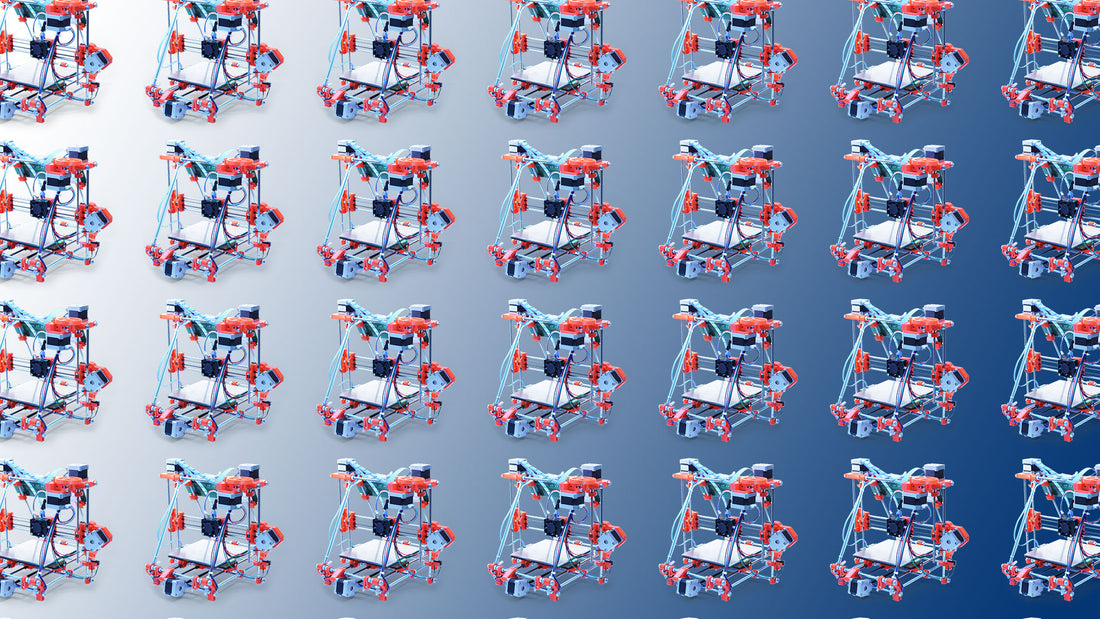TLDR: Our Makerfaire Malta stand was set to take you back in time to the start of 3D printing, on a journey to the present day. Sadly Covid-19 put a stop to that so we're sharing it with you here instead.
The spark that ignited a manufacturing revolution
RepRap (or “Replicating Rapid Prototyper”) was a project started in February 2004 by Dr Adrian Bowyer at the University of Bath, UK. The objective: to create a machine that could reproduce itself by 3D printing its own parts. Fused deposition modelling (FDM) 3D printing was a proven technology back then, but machines were the size of a refrigerator and prohibitively expensive to the average user. RepRap was different: it aimed to make FDM 3D printing affordable enough to be accessible to anyone.
RepRap hardware and software was released under open source licenses, giving anyone the legal freedom to use, build, or profit from the work. As a result of this, a large community of RepRap volunteers assembled over time, and the project became hugely popular. RepRap machines could produce their own parts, meaning RepRap pioneers were able to quickly and affordably deploy modifications and share these designs back into the community. Much like Darwin’s theory of natural selection, successful modifications gained popularity and were adopted as part of a new standard.
The birth of E3D
Early machines such as the Mendel90 and Huxley gave Design and Technology teachers Sanjay and Dave the opportunity to gain expertise in precision-engineered HotEnds and extrusion systems – the most complex part of any 3D printer – and start producing them for the masses. They managed to convince Josh to give up his well-paid engineering job and join them, and so E3D was born. The rest is history.
Today, TeamE3D is 60 strong, and growing. We maintain a secure position in the 3D printing industry by producing expert-engineered high quality HotEnds and extrusion systems for FDM 3D printing. 3D printers have evolved since the early RepRap machines, but the engineering complexity of HotEnds and extrusion systems remains. Today, some of the biggest OEMs in the industry, including Prusa Research, BCN3D, and Creality, depend on E3D-developed systems to make their machines extrude industrial-grade polymers reliably and effectively.
Some of our most successful consumer products include the V6 All-Metal HotEnd, Volcano, and Titan, which have been fitted into countless 3D printers throughout the world. We consider our ToolChanger & Motion System and ASMBL technology to be one of the biggest innovations in FDM technology in the last decade, and in the spirit of RepRap, we’ve made the designs for this completely open source so people can use them as a reference to create a new standard.
What’s next for E3D?
We’re busy re-imagining how HotEnds and filament drives are designed and made from the ground up, based on what our customers and OEM partners are asking for. We’re focusing on performance size and weight, ease of use and convenience, and keeping costs low. New product prototypes are undergoing beta-testing and they should see the light of day in the next few months.
If this journey has taught us anything, it’s that great things can happen when we work with the community.
If you like discussing RepRap things, why not join our Official Discord community, where we talk about 3D printing all the time.
